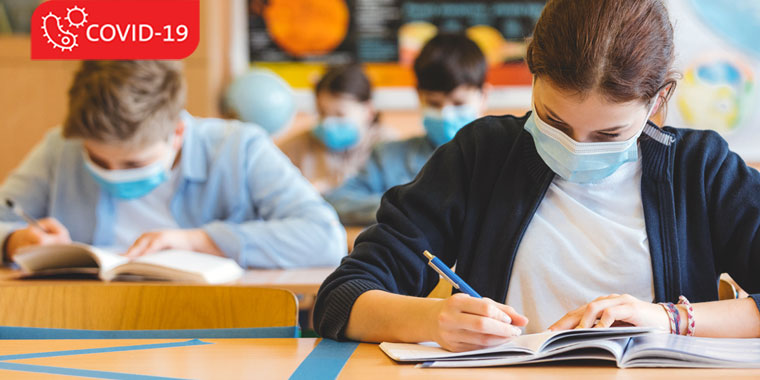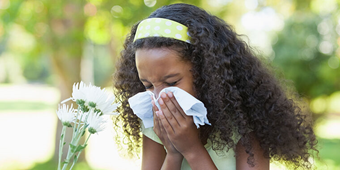School Reopening Decisions: How To Meet Your Child’s Needs

Answer a few questions and we'll provide you with a list of primary care providers that best fit your needs.
As school districts across Southwest Ohio announce plans for reopening amid the COVID-19 pandemic, parents are making plans of their own.
School will look different in the fall. The American Academy of Pediatrics (AAP), the American Federation of Teachers, the National Education Association, and the School Superintendents Association say that science should be the key factor in safely reopening schools.
Your child may go back to school wearing a mask five days a week, with smaller class sizes. Some children will face all online learning. Others will experience a blended model, with in-school and virtual instruction.
To learn how you can make sure your children get everything they need for healthy learning and growth in the coming school year, Premier Health Now talked with Michael Barrow, MD, at Premier Health Family Care – North.
School provides many positive aspects in a child’s life. The AAP cites academic, mental, and physical health benefits that come with being in the classroom.
Children build relationships with others and learn how to socialize and deal with different people and situations, Dr. Barrow says. In-person teaching provides access to a more complete type of learning that builds on the thoughts, ideas, and input shared by everyone in a classroom.
“To me, relationships are what make the world go,” Dr. Barrow says. “With the stay-at-home order and online learning, we are breaking that up.”
Strengthen the Learning Experience
How do we strengthen relationships in the era of online learning and social distancing? Parents should be ready to provide extra support to their child and their child’s teachers.
When students learn in a classroom, there’s a team sport mentality. Children and teens learn how to work together and compromise. A classmate’s questions or viewpoint might open a window of understanding for another student. Teachers can read students’ body language and see if they truly understand a new concept.
Online and remote learning don’t provide the same atmosphere. Dr. Barrow says many of his adolescent patients told him it’s more difficult. It’s harder for students and teachers to read each other’s cues through Microsoft Teams or Zoom.
While parents can’t replace teachers, you can help by:
- Asking questions about what your child is learning, especially if online learning is taking place
- Encouraging your student to reach out to a teacher for extra help or guidance If something is not understood
Teachers guide students in practicing the basic social skills they’ll need as adults, along with academic knowledge.
“School is a safe place for all of this to occur,” says Dr. Barrow. “We have caring adults to guide them on that path, from kindergarten on up. That is the job of a teacher. It’s not just to teach reading and writing, but all the other stuff, too.”
Focus On Health And Safety
School districts will be making every effort to keep buildings and classrooms safe and clean in the coming school year. And it’s a safe bet that lessons in health and safety will frequently occur, says Dr. Barrow.
You can start reminding your children now about proper hygiene rules:
- Cough into your elbow
- Don’t come to school if you feel sick
- Don’t fill your water bottle from the bathroom sink
- Don’t share your food or drink with others
- Don’t use the drinking fountain
- Use hand sanitizer when you can’t wash your hands
- Wash hands often, with soap and water, for at least 20 seconds
- Wash your hands before and after you eat
- Wash your hands after you use the bathroom
- Wear a mask
“One of the best things parents can do is to model these behaviors,” says Dr. Barrow. “Let your children see you washing your hands. Tell them what you are doing. Say, ‘Hey, kids, I just took out the trash so now I need to wash my hands.’ You can’t just say it. You have to do it.”
Families, especially those with younger kids, should also practice wearing masks at home and during outings. Dr. Barrow suggests making it into a game or finding ways to make mask wearing fun.
Here are some tips to encourage mask wearing:
- Create a mask wearing game
- Let your children decorate their masks
- Tell your children to remind you to wear a mask
- Try wearing a mask while doing an outdoor activity
- Wear masks while completing indoor chores
The more often parents model wearing a mask, the more likely children are to accept it, Dr. Barrow says.
Keep an Open Mind
The rules for returning to school are part of a fluid situation. Dr. Barrow hopes families can remember that everyone is doing the best they can with the information they have.
“There are no good answers yet,” Dr. Barrow says. “We can focus on what is the best from a health care and education standpoint. And know that what’s appropriate in Dayton may not be appropriate elsewhere.”
Answer a few questions and we'll provide you with a list of primary care providers that best fit your needs.
Source: Michael Barrow, MD, Premier Health Family Care – North; American Academy of Pediatrics; CNN




